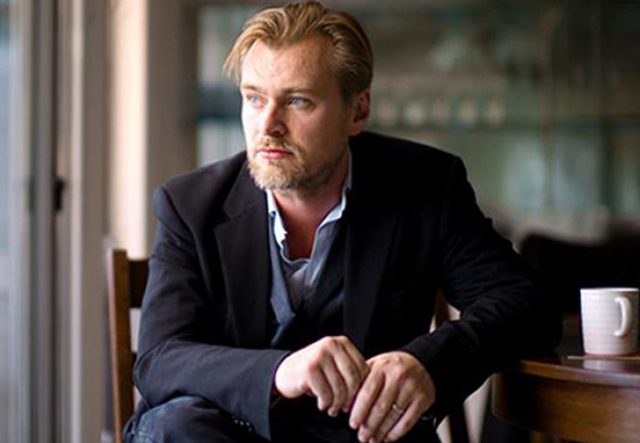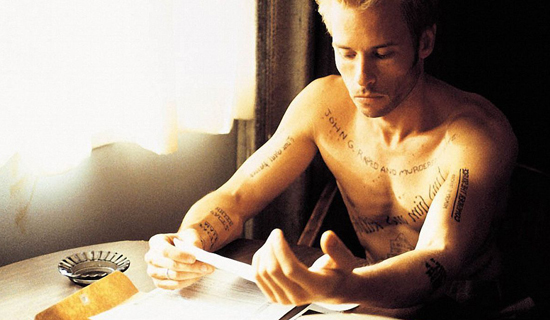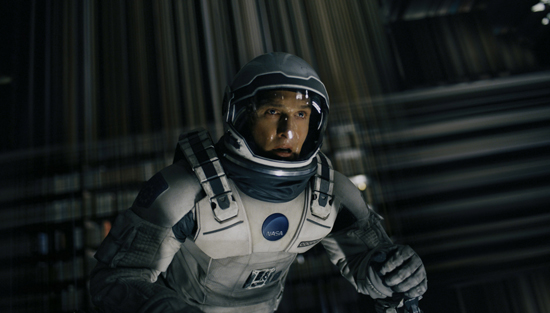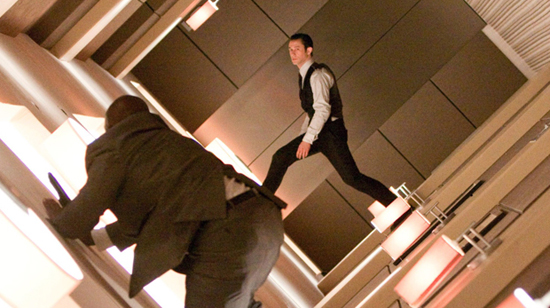
There are many film directors out there that have, in one form of another, a following. Whether it’s a full on fandom or just a casual ongoing interest, many film directors benefit from these followings as a way of generating interest for whatever project they have coming up in the pipeline. Sometimes a filmmaker struggles to live up to those expectations, while others are able to build upon every success, eventually leading to a filmography that not only stands well alone in it’s parts, but also begins to be appreciated and studied as a complete body of work. Often times, the most unique directorial careers exist outside the Hollywood system, working within more modest budgetary constraints which may limit their ambitions but will in turn retain their artistic integrity. These usually are your auteurs like Terrence Malick or David Lynch, whose artistic expression is very much outside of the mainstream. Though their movies have ambition and are true to their artistic senses, you can also see in many of their movies a very outsider imprint that’s telling of their limited budgets. But, on the rare occasion, you’ll see a filmmaker with ambition and artistic integrity not only hit the mainstream, but somehow thrive within delivering movies that both succeed financially and are able to challenge their audiences. It’s in that rarefied air that you find directors who not only have a following, but whose every new project carries an air of importance that instantly makes them an event in the eyes of audiences. And one of those who has managed to get to that place recently is a director whose goal is to constantly push the limits of film-making with every new movie he undertakes.
British-American director Christopher Nolan has built up a reputation in Hollywood for making colossal, mind-bending epics. His rise within the industry is nothing out of the ordinary. Raised in the shadow of Hollywood while his father was a professor at UCLA, Nolan was well positioned to learn the tricks of the trade from an early age. After attending film school back in his native London, he immediately went to work on his first feature, Following, a micro-budget thriller that would reveal much of the style and themes that he would further explore in future films; mainly those of obsession and overcoming demons, both internal and external. Collaborating with his younger brother Jonathan, himself a burgeoning writer and filmmaker, his follow-up film, Memento (2000) would immediately gain him notoriety from the film industry, earning both him and Jonathan their first Oscar nominations. That’s not bad for a second feature. The non-linear story-telling of Memento itself would become one of the most influential inspirations to a whole new crop of filmmakers coming up in the early 2000’s, many of whom have held Nolan up as one of their icons. But, to Christopher’s credit, he never got complacent based on that early success and it helped him to recognize great opportunities once they came his way. Once Warner Brothers handed him the reigns of their Batman franchise, he proved to the world that it was not him selling out, but instead an opportunity to rewrite the superhero genre forever. With every new movie, Nolan has wowed us making each film grander than the last, and has achieved a rarefied air of ambition mixed with artistic integrity that we haven’t seen the likes of since possibly that of Stanley Kubrick. Like other profiles in this series, I’ll be looking at the different themes and continuing features that have made Christopher Nolan’s directorial career so distinct, and how they have manifested so impact-fully in his most noteworthy movies.
1.

BROKEN MEN
One of the most consistent tropes of Christopher Nolan’s filmography is that of stories centered around men who in some way or another are damaged or lost. Sometimes it’s out of a dilemma of their own making, or it’s because of some deficiency that makes living a struggle. But no matter what that obstacle is, it becomes the central driving force within the protagonist’s story in one of Nolan’s films. His breakthrough feature, Memento, features one of the clearest examples of one of these broken characters. Guy Pearce plays Leonard, a man who suffers from short term memory loss who literally has to mark up his own body in order to remember key information in order to solve a mystery. In one of Nolan’s most ingenious narrative devices, he tells Leonard’s story in reverse, starting at the end and finishing at the beginning, putting us the audience in the same disoriented mindscape that the character is in. Over the course of the film, we identify with that struggle, and how infuriating it is to come to terms with not only one’s place in the world, but also with ones self. It’s a similar trope that Nolan would also explore through Bruce Wayne’s entire arc in the Dark Knight trilogy. Through the three films, Christian Bale’s Wayne believes that by becoming the symbol of justice through Batman that he can inspire a reawakening in his beloved city of Gotham. But, once he is morally tested by the Joker in The Dark Knight (2008) and physically beaten down by Bane in The Dark Knight Rises (2012) we see a further internal awakening in the character to confront the demons that he’s been trying to run away from his whole life. In Leonardo DiCaprio’s Cobb from Inception (2010), we see his literal inner demons manifest as a murderous nightmare in the form of his departed wife. It’s a theme that Nolan constantly mines to lesser and greater extents in all his movies and it’s probably the thing that sticks out the most as his defining signature trait as a storyteller.
2.

TIME
The other common trope of Christopher Nolan’s filmography apart from his troubled main characters is the way that he likes to play around with the concept of time. Certainly the formatting of Memento showed Nolan’s interest in telling a story out of order, but even in his more linear films do we see the idea of time holding a special significance in his character’s stories. The movie Inception introduced a very novel concept of how different levels of dreaming can stretch out the perception of time on the dreamer. The deeper you go, the more time stretches out. So for his characters, who are infiltrating a shared dreamscape, each new layer takes on a different timescale, and special measures are undertaken to ensure that everything can still line up on time at the different levels. Creating these rules for his fictional world of dream heists in Inception are all fascinating enough, but Nolan has also shown interest in the way time works on a truly infinite, scientific scale as well. With Interstellar (2014), Nolan explores the way that relative time acceleration can cause Matthew McConaughey’s astronaut to pass by decades worth of time on Earth after coming too close to the orbit of a black hole. By the end, what ended up being a couple days for him was 75 years back on Earth, and he reunites with his daughter who has gone from a child to an old woman in the blink of an eye. Nolan even explores the very limits of time, by having McConaughey’s Cooper enter a tesseract found in the singularity of a black hole, where time is irrelevant. It’s in those two features where Nolan makes time an important factor as a part of the story, but even in some of his more grounded movies he uses time as an important story-telling tool. Whether it’s the inter-cutting found in Dunkirk (2017) or the flashbacks in Batman Begins (2005), Nolan always seems to find interesting ways to use the passage of time as an element of his story. It’s something that he’s also not through with exploring, as his next feature Tenet (2020) looks to put the concept front and center.
3.

ARCHITECTURE
One does have to wonder if Christopher Nolan hadn’t applied his intelligence to a career in film-making, he might have become an architect instead. What you’ll notice very commonly in many of his movies is that Nolan loves to photograph buildings in his movies. You can pull up so many stills of just the flyover shots of cityscapes in his movies, and those alone could fill up a spread in Architectural Digest. But his interest in architecture doesn’t just stop at exteriors. He puts just as much work into crafting unique looking interiors for his films as well. There is something about his use of eye-catching architecture in his movies that relates to Nolan’s desire to ground his movies in a certain reality. He’s always concerned about the authenticity of his worlds, and making the audience feel like they are a part of the scene, paying as close attention to the smallest details as possible. And this can range from anything as spectacular as the Bat Cave in The Dark Knight, to something as intimate as Mark Rylance’s fishing boat in Dunkirk, to something as otherworldly as the spaceships of Interstellar. At the same time, Nolan is also just as interested in manipulating architecture in unexpected ways. Inception in particular shows Nolan pushing the limits of exterior and interior spaces to places that can never exist in the real world. One of the most spectacular scenes in the movie involves just a simple hotel hallway, but through the manipulation of the dream world, it is literally flipped upside down. And of course in true Nolan fashion, no CGI enhancement was used. Taking a cue from Kubrick’s 2001: A Space Odyssey (1968) rigged a fully furnished hallway to a gimble cylinder and spun the whole thing around with a camera locked into place. Nolan did use CG to create a different spectacular moment of a city folding in on itself, but even this was done with an eye towards retaining an architectural integrity. No matter how grounded or beyond the realm of physics Christopher Nolan’s architectural sights may be, they nevertheless make an impact in defining his visual style.
4.

IMAX
One thing that has certainly defined Christopher Nolan within the industry beyond the films that he makes is his passionate advocacy for both the theatrical experience and for the use of physical media in the film-making process. Deeply opposed to even the thought of shooting with digital cameras, Nolan has committed himself to shooting all his movies on film stock. For him it’s not just holding onto a sense of tradition in film-making; he genuinely believes that shooting on film brings out the best fidelity within the image, and there is plenty of evidence for that. The kind of cinematography found in Nolan’s films would certainly not carry the same kind of atmosphere if they were shot digitally. It also helps that Nolan always uses larger formats for his films. One of the main reasons Christopher Nolan’s movies have become big events upon release is because his film stock of choice is 70 mm IMAX, the largest format in the whole market. And he constructs every one of his movies around the use of this massive and expensive film stock. It’s really remarkable how Nolan is able to construct his movies using IMAX cameras, because they are not easy to move around. Collaborating with the greatest IMAX photographers in the business, Wally Pfister and Hoyte Van Hoytema, Nolan has managed to put the no-room-for-error IMAX lens in some of the most remarkable places. And what he’s managed to shoot in the format has been some of cinema’s most spectacular moments ever; the flipping of Joker’s truck in The Dark Knight, the flyby of a black hole in Interstellar, Bane’s midair hijacking in The Dark Knight Rises‘ prologue, and the sinking ships of Dunkirk. None of those scenes would have had the same impact on anything less than the IMAX frame. And a brand new Nolan film demands to be seen on a big screen. One hopes that the director’s reputation for showmanship on this level will be enough to bring audiences back to the theaters this summer with Tenet. Regardless, I don’t think you’ll see Nolan abandon the IMAX format anytime soon.
5.

FAMILIAR FACES
One last thing you’ll easily notice about Nolan’s movies is that he does like to use actors more than once in his projects. He’s managed to work with actors like Tom Hardy three times, Cillian Murphy five times, and Sir Michael Caine has been in everything he’s made since 2005’s Batman Begins (those wondering where the noticeably absent on screen actor was in Dunkirk need to listen for that familiar cockney accent coming from the comm-link radios directing the fighter pilots in the movie). It’s not uncommon for a director to have a stable of go to actors for his movies, like Martin Scorsese and Alfred Hitchcock, but what I think makes Nolan’s use of his actors so unique is the versatility in which he uses them. Just look at the different roles that Tom Hardy has played in his movies; from a suave dream forger in Inception, to the formidable supervillain Bane in The Dark Knight Rises, to a RAF fighter pilot in Dunkirk. The only thing those performances have in common is that in two of them, Hardy is required to wear a breather mask for most of the movie. It is interesting that for the roles of his film’s protagonists, Nolan usually just works with that actor once; apart from Christian Bale’s three-peat as Batman. Leonardo DiCaprio, Matthew McConaughey, Guy Pearce, Hugh Jackman and Al Pacino all delivered some of the best work of their career in a Nolan film, but they were also one and done with the director. And it wasn’t because of any friction between Nolan and the actors; they all have nothing but great things to say about their experience. It’s just that this is the way Nolan likes to work; he likes to return to familiar faces to fill out his supporting roles, but he prefers to have a clean slate when it comes to his main characters. And I think that this has helped to make every new film of his feel so refreshing each time. A new face among all the familiar ones means a chance for a bold new adventure.
There’s no doubt that Christopher Nolan has earned his spot near the top of the best working directors today. The fact that he has made it his goal in life to push the medium of film further with every movie he makes has endeared him to cinephiles all over the world, including myself. It’s so rare to see a filmmaker these days deliver such uncompromising vision on the big screen with the full backing of a major studio. You can definitely see the influence of Kubrick on Christopher Nolan, himself being a unique voice who managed to maintain his artistic integrity within the studio system. So many auteurs try to work on the outside the same way, but Nolan has managed to bend the studios towards his way of thinking, which is unheard of today in Hollywood. Who else could’ve gotten a studio to invest in something as out-of-this-world as Inception and still see that movie not only click with audiences, but also generate a huge profit in the end. One of the reasons why Nolan has gotten to the position that he’s in is because he recognized opportunities when they came his way and made the most of them. When a studio offers you the reigns to a franchise, it may seem like a compromise that could threaten your artistic integrity in return for a bigger pay day. But Christopher Nolan did not see it as a compromise, but rather an opportunity to make his own kind of super hero movie, and in turn he set the bar higher for the genre as a whole. Had he said no to Batman, who knows if he would’ve ever gained the trust of any other studio and been able to create the spectacular films that he’s excelled at ever since. Nolan’s career can be summed up by his good instincts and his drive to always keep moving forward with what the medium can do. And the fact that his movies are absolute must sees in a movie theater could also make him the possible savior for a struggling industry in this current crisis that we are in right now. For me personally, I will never see a Nolan film on anything but the biggest screen possible for the first time, and my hope is that theaters will survive long enough to make that possible; for as long as Christopher Nolan continues to make more movies.